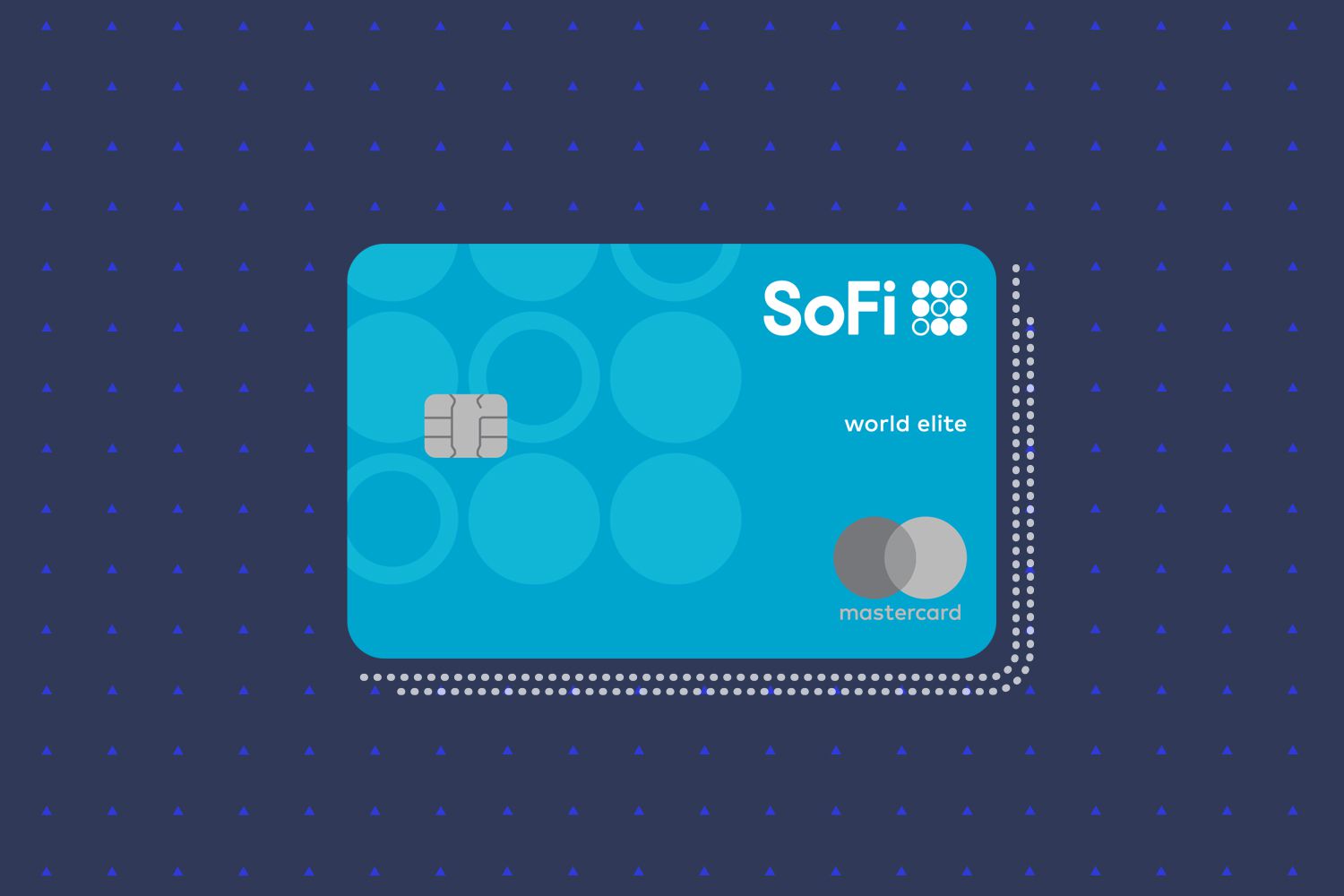

Finance
What Credit Bureau Does PenFed Pull From
Published: January 9, 2024
Learn about which credit bureau PenFed pulls your credit report from and how it may affect your finances.
(Many of the links in this article redirect to a specific reviewed product. Your purchase of these products through affiliate links helps to generate commission for LiveWell, at no extra cost. Learn more)
Table of Contents
Introduction
Welcome to our comprehensive guide on credit bureaus and their role in the lending industry. In this article, we will delve into the specific credit bureau that PenFed, short for Pentagon Federal Credit Union, pulls credit reports from. If you are considering applying for a loan or credit card with PenFed, understanding the credit bureau they utilize can be advantageous in preparing your credit profile.
Credit bureaus play a crucial role in the financial industry by collecting and maintaining credit information on individuals and businesses. Lenders and creditors rely on these bureaus to assess the creditworthiness of borrowers and make informed decisions on lending and extending credit.
As one of the largest credit unions in the United States, PenFed offers a wide range of financial products and services, including loans, credit cards, and mortgages. By understanding which credit bureau PenFed pulls reports from, potential borrowers can gain insights into how their credit history and score may be evaluated.
Now, let’s dive into the fascinating world of credit bureaus and explore the credit bureau used by PenFed.
Overview of Credit Bureaus
Credit bureaus, also known as credit reporting agencies, are organizations that collect and maintain credit information on individuals and businesses. They gather data from various sources, such as lenders, creditors, and public records, to create comprehensive credit reports.
These reports contain a wealth of information, including payment history, credit utilization, types of credit accounts, outstanding debts, and public records such as bankruptcies or tax liens. This information is then used by lenders and creditors to assess an individual’s creditworthiness and make informed decisions on lending or extending credit.
There are three major credit bureaus in the United States: Equifax, Experian, and TransUnion. Each bureau operates independently, collecting and compiling credit data from different sources. While the information contained in their credit reports may overlap to some extent, there can be variations in the data reported by each bureau.
It is worth noting that credit bureaus are regulated by the Fair Credit Reporting Act (FCRA) and are required to provide individuals with a free copy of their credit report once every 12 months upon request. This allows consumers to review their credit information and address inaccuracies or discrepancies that may impact their creditworthiness.
Understanding how credit bureaus gather and analyze credit information is essential, as the information they provide serves as the foundation for lenders and creditors to evaluate credit applications. This knowledge becomes particularly important when seeking credit from financial institutions like PenFed.
Next, we will explore PenFed and its significance in the financial industry.
Understanding PenFed
PenFed, short for Pentagon Federal Credit Union, is one of the largest credit unions in the United States. Established in 1935, PenFed has grown to serve over 2 million members and offers a wide range of financial products and services. With its headquarters in McLean, Virginia, PenFed operates branches and ATMs across the country, providing convenient access to its members.
As a credit union, PenFed is not-for-profit and is owned by its members. This unique structure allows PenFed to offer competitive interest rates, lower fees, and personalized customer service compared to traditional banks. PenFed caters to both military and civilian members, and membership is open to individuals who meet the eligibility criteria.
PenFed is known for its commitment to member satisfaction and its focus on providing excellent financial solutions. Whether it’s offering low-rate auto loans, mortgages, credit cards, or personal loans, PenFed aims to meet the diverse needs of its members and help them achieve their financial goals.
Now that we have an understanding of PenFed and its prominence in the financial industry, let’s explore the specific credit bureaus that PenFed pulls credit reports from.
Credit Bureaus Used by PenFed
When it comes to credit evaluation, PenFed relies on credit reports from the three major credit bureaus: Equifax, Experian, and TransUnion. These bureaus are widely recognized in the industry and provide comprehensive credit information on individuals and businesses.
By pulling credit reports from all three bureaus, PenFed ensures that they have a comprehensive view of an individual’s credit history and financial standing. Each bureau may have slightly different information, as they collect data from different sources. Therefore, reviewing credit reports from all three bureaus gives PenFed a holistic understanding of an applicant’s creditworthiness.
It’s important to note that while PenFed pulls reports from all three bureaus, they may not give equal weight to the information provided by each bureau. Lenders have their own proprietary algorithms and underwriting criteria to assess creditworthiness. However, having access to information from multiple bureaus allows PenFed to make a more informed decision when evaluating credit applications.
Moreover, by pulling reports from all three bureaus, PenFed ensures that they are complying with industry best practices and regulatory requirements. Additionally, this approach minimizes the risk of overlooking any potential errors or discrepancies in the credit information provided.
If you are considering applying for a loan or credit card with PenFed, it’s recommended to review your credit reports from Equifax, Experian, and TransUnion beforehand. This will allow you to identify any inaccuracies or negative items that may impact your creditworthiness. By addressing these issues proactively, you can increase your chances of approval and potentially secure more favorable loan terms.
Now that we understand the credit bureaus used by PenFed, let’s explore why the selection of credit bureaus is important for lenders.
Importance of Credit Bureau Selection
The selection of credit bureaus is a critical decision for lenders like PenFed. The credit information provided by bureaus forms the basis for evaluating an applicant’s creditworthiness and determining the level of risk involved in extending credit. The choice of which credit bureaus to use can significantly impact the lending process and the outcomes for both lenders and borrowers.
Here are a few key reasons why credit bureau selection is important:
- Comprehensive Credit Data: Each credit bureau collects credit information from different sources, such as lenders, creditors, and public records. By utilizing multiple credit bureaus like Equifax, Experian, and TransUnion, lenders like PenFed gain access to a more comprehensive view of an individual’s credit history and financial behavior. This comprehensive data allows for a more accurate assessment of their creditworthiness.
- Evaluating Credit Risk: Lenders need to evaluate the potential risk associated with extending credit to an individual. By pulling credit reports from different bureaus, lenders can compare and analyze the credit information provided by each bureau. This comparison enables lenders to have a more well-rounded understanding of an applicant’s creditworthiness and make more informed lending decisions.
- Identifying Inaccuracies and Fraudulent Activity: The credit reporting process is not infallible, and errors or fraudulent activities can occur. By utilizing multiple credit bureaus, lenders have a greater chance of identifying any discrepancies or fraudulent information. This allows lenders to ensure the accuracy of the credit information and protect themselves from potential fraud risks.
- Regulatory Compliance: Credit bureaus are regulated by laws such as the Fair Credit Reporting Act (FCRA), which outlines the rights and responsibilities of both consumers and lenders. By working with reputable credit bureaus and selecting multiple sources for credit information, lenders like PenFed can ensure compliance with industry regulations and best practices.
By carefully selecting the credit bureaus they use, lenders like PenFed can mitigate risk, improve their decision-making process, and provide fair and accurate assessments of credit applications. This benefits both the lender and the borrower, as it promotes a transparent and reliable lending environment.
Now, let’s explore the factors that may influence PenFed’s choice of credit bureaus in more detail.
Factors Influencing PenFed’s Choice
Several factors influence PenFed’s choice of credit bureaus when pulling credit reports. These factors help PenFed make strategic decisions to ensure efficient and effective credit evaluations. While specific factors may vary based on PenFed’s internal policies and priorities, here are some common considerations:
- Data Quality: The accuracy and completeness of the credit data provided by a credit bureau are essential. PenFed needs reliable and up-to-date information to assess an applicant’s creditworthiness accurately. When selecting credit bureaus, PenFed will prioritize those with a reputation for providing high-quality credit data.
- Industry Standards and Regulatory Compliance: PenFed, like any reputable financial institution, adheres to industry standards and regulatory requirements. They want to ensure they work with credit bureaus that meet these standards and comply with the Fair Credit Reporting Act (FCRA) and other relevant regulations.
- Costs and Contracts: The financial arrangements between PenFed and the credit bureaus will also factor into their decision. This includes considering costs associated with obtaining credit reports and any contractual agreements, such as service level agreements, that dictate the terms of their relationship.
- Customer Experience: PenFed strives to provide an exceptional customer experience. This extends to the credit evaluation process, where they aim to make it as streamlined and efficient as possible for applicants. Selecting credit bureaus that offer user-friendly systems and tools can contribute to a positive customer experience.
- Data Security: Protecting sensitive consumer information is paramount for both PenFed and the credit bureaus they work with. PenFed will prioritize credit bureaus that prioritize robust data security measures, such as data encryption and secure transmission protocols, to safeguard personal and financial information.
- Historical Relationship: Previous successful collaborations with credit bureaus can influence PenFed’s decision. If PenFed has established a reliable and beneficial working relationship with specific bureaus in the past, they may continue to work with them based on trust, familiarity, and previous positive experiences.
It’s important to note that PenFed’s selection of credit bureaus may evolve over time based on changes in the industry landscape, advances in technology, and their specific business objectives. The ultimate goal is to select credit bureaus that provide accurate, reliable, legally compliant, and cost-effective credit information to support their credit evaluation process.
Now, let’s conclude this guide and summarize the key points discussed.
Conclusion
In conclusion, when it comes to credit evaluations, PenFed utilizes credit reports from the three major credit bureaus: Equifax, Experian, and TransUnion. By pulling reports from multiple bureaus, PenFed gains a comprehensive view of an individual’s credit history and financial standing, allowing for a more accurate assessment of creditworthiness.
The choice of credit bureaus is crucial for lenders like PenFed, as it impacts the evaluation process, risk assessment, and overall lending decisions. Factors such as data quality, regulatory compliance, costs, customer experience, data security, and previous relationships influence PenFed’s decision in selecting credit bureaus.
Understanding the credit bureaus used by PenFed is beneficial for individuals considering applying for loans or credit cards with them. Reviewing your credit reports from Equifax, Experian, and TransUnion beforehand allows you to identify and address any inaccuracies or negative items that may impact your creditworthiness.
By selecting credit bureaus strategically and working with reputable institutions, PenFed ensures compliance with regulations and industry best practices while providing a fair and transparent lending environment. This benefits both the lender and the borrower, promoting accurate credit evaluations and informed lending decisions.
As the financial landscape continues to evolve, it’s important to stay informed about credit bureaus and their role in the lending industry. Being proactive in understanding and managing your credit is key to achieving financial goals and securing favorable loan terms.
We hope this guide has provided valuable insights into the credit bureau selection at PenFed and the importance of credit bureau evaluations in the lending process. Now, armed with this knowledge, you can navigate the lending landscape with confidence.














